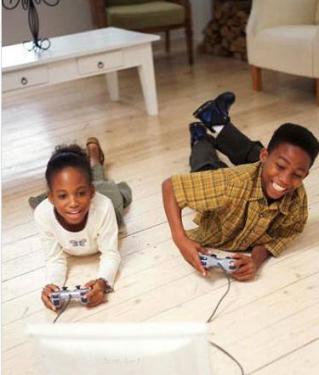 As babies begin to explore the world outside their crib, the floor becomes their playground. No matter how comfortable the furniture is, they prefer to sit, crawl, or lie on the ground. However, this proximity to the floor can expose them to hidden dangers—like formaldehyde, which often lingers in flooring materials.
Studies show that more than 80% of indoor formaldehyde is concentrated within 1.5 meters of the ground. Since children breathe more rapidly and have developing bodies, they are more vulnerable to these harmful substances. In fact, formaldehyde has been linked to an increased risk of childhood leukemia. The China Indoor Decoration Association has recently warned about the risks of indoor pollution from home renovations, emphasizing the need for careful selection of flooring materials.
When choosing flooring, it's important to be aware of the potential hazards. Common options like wooden floors, particle boards, and stone tiles all come with their own set of environmental concerns. Particle board, in particular, is a major source of formaldehyde emissions. Solid wood flooring may release volatile organic compounds (VOCs), while some tiles contain radioactive elements. While some families opt for fully tiled floors to avoid contamination, this choice can lead to cold, hard surfaces that are uncomfortable and even dangerous for young children and the elderly.
To keep your home safe, always choose flooring that meets national safety standards for harmful substances. Avoid using too many different types of flooring in large areas, as this can increase the risk of chemical buildup. When selecting materials for a child’s room, there are several key points to consider:
1. The floor should feel warm and soft underfoot, be easy to clean, and have a smooth surface without uneven patterns or gaps. Any small crevices could trap dirt or become a hazard if a child falls into them. These patterns can also cause trips and falls.
2. A very hard floor might be easy to clean, but it can be uncomfortable for active children who climb and play everywhere. It’s better to choose a material that offers some flexibility and good slip resistance.
3. Avoid plastic flooring or products like foam puzzles, which can emit harmful volatile organic compounds (VOCs) that negatively affect a child’s health.
By making informed choices and paying attention to detail, you can create a safer, more comfortable environment for your children. After all, the space beneath their feet should be just as safe as the rest of the home.
As babies begin to explore the world outside their crib, the floor becomes their playground. No matter how comfortable the furniture is, they prefer to sit, crawl, or lie on the ground. However, this proximity to the floor can expose them to hidden dangers—like formaldehyde, which often lingers in flooring materials.
Studies show that more than 80% of indoor formaldehyde is concentrated within 1.5 meters of the ground. Since children breathe more rapidly and have developing bodies, they are more vulnerable to these harmful substances. In fact, formaldehyde has been linked to an increased risk of childhood leukemia. The China Indoor Decoration Association has recently warned about the risks of indoor pollution from home renovations, emphasizing the need for careful selection of flooring materials.
When choosing flooring, it's important to be aware of the potential hazards. Common options like wooden floors, particle boards, and stone tiles all come with their own set of environmental concerns. Particle board, in particular, is a major source of formaldehyde emissions. Solid wood flooring may release volatile organic compounds (VOCs), while some tiles contain radioactive elements. While some families opt for fully tiled floors to avoid contamination, this choice can lead to cold, hard surfaces that are uncomfortable and even dangerous for young children and the elderly.
To keep your home safe, always choose flooring that meets national safety standards for harmful substances. Avoid using too many different types of flooring in large areas, as this can increase the risk of chemical buildup. When selecting materials for a child’s room, there are several key points to consider:
1. The floor should feel warm and soft underfoot, be easy to clean, and have a smooth surface without uneven patterns or gaps. Any small crevices could trap dirt or become a hazard if a child falls into them. These patterns can also cause trips and falls.
2. A very hard floor might be easy to clean, but it can be uncomfortable for active children who climb and play everywhere. It’s better to choose a material that offers some flexibility and good slip resistance.
3. Avoid plastic flooring or products like foam puzzles, which can emit harmful volatile organic compounds (VOCs) that negatively affect a child’s health.
By making informed choices and paying attention to detail, you can create a safer, more comfortable environment for your children. After all, the space beneath their feet should be just as safe as the rest of the home.Fireproof Glass,Tempered Fireproof Door,Fireproof Glass Windows,Fireproof Interior Door
Huaian Hongrui Glass Co.,Ltd , https://www.hongruiglass.com